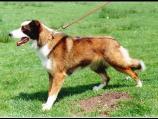
This is a placeholder text
Group text
by Pirates Lair on 22 May 2012 - 05:05
Not to derail the topic, but; (and I believe you meant to say a quiet dog)
In real life (unless specifically trained/required to do so) a dog must bark, in order make an impact and announce that they are about to bite! As Hired Dog pointed out already.
Here is one example, Body Language, and he also barks in certain sistuations.
Kim
by Pirates Lair on 22 May 2012 - 05:05
Kim
by magdalenasins on 22 May 2012 - 11:05
by fawndallas on 22 May 2012 - 15:05
I do not want to derail this topic, but I do want more information. Maybe what I had seen of "bite work" was one sided, which put me off on it.
Pirates, mind if I PM you off this topic, but about more information?
by Pirates Lair on 22 May 2012 - 16:05
Kim
by magdalenasins on 23 May 2012 - 17:05
by Pirates Lair on 23 May 2012 - 23:05
Allow me to point out the control, and the fact that Marko spits out the sleeve and engages the Decoy (who is wearing a hidden sleeve).
Please post some video's of "Professionally Trained" dogs that can do the same.
I know of only several and would appreciate seeing more.
Kim
by fawndallas on 24 May 2012 - 02:05
Most of the videos I have seen for bite / protection work, the dog just seems so out of control with barking and snarling. As I have never been that interested in bite work for show, I never paid much attention other than thinking to myself ("each his own, but no way in my household").
Now that I see that not all protection dogs are trained for this "uncontrolled" reaction..... I am more than willing to rethink my intitial impression.
~~~~~~~~~~~~~``
We have gotten off topic for the OP. If we want to continue this topic, lets start another thread.
by magdalenasins on 24 May 2012 - 12:05
I do have all the Michael Ellis dvd's now to put it back on track lol.
by Shezam1 on 31 May 2012 - 03:05
Contact information Disclaimer Privacy Statement Copyright Information Terms of Service Cookie policy ↑ Back to top




